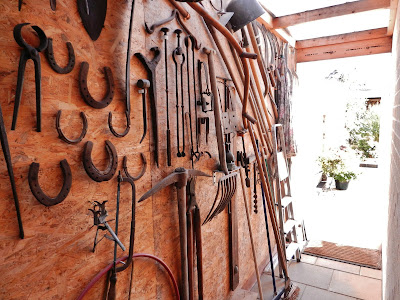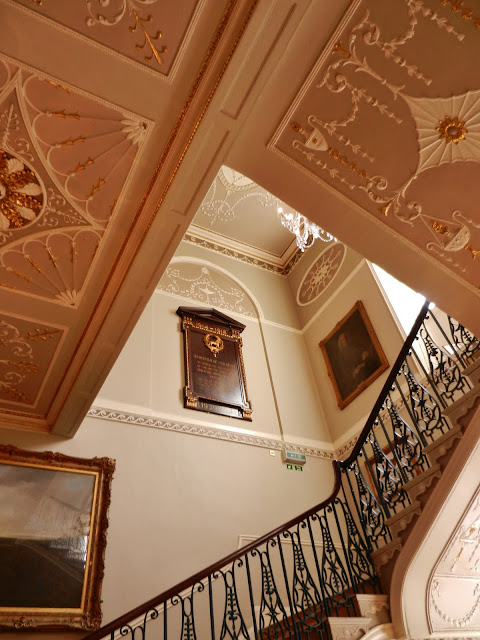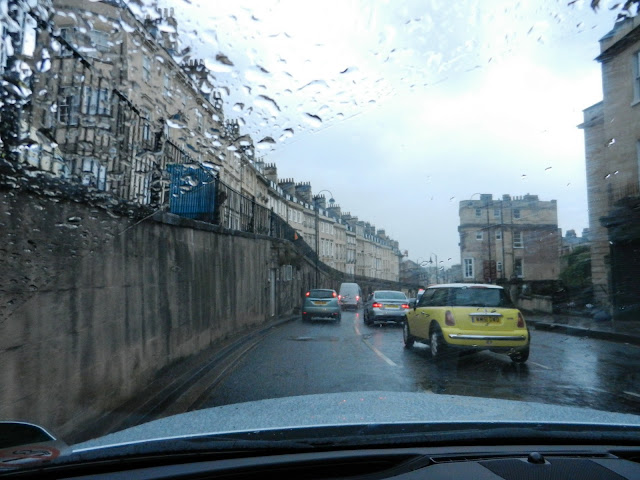Every time I start a post, I resolve to use less photos.
Twenty-one this time.
Not working out so well!
We stayed with Jan, my childhood friend, and her husband Steve for four days. Our bedroom was filled with sunlight when we awoke on Tuesday morning and I had a glorious sleep-in. The only activity planned for the day was to visit my old haunts, so we got a late start after breakfast.
Jan is big on three squares a day and her main occupation, other than driving us around because I was out of patience with driving, was feeding us. Everywhere we went, a picnic was sure to follow.
Thank you Jan, for taking such good care of us. I felt very spoiled. In a good way.
I'll tell you something. Jan gets a big kick out of casually referring to things that she has read on this blog. She gives a little sideways glance and a smirk as she lets me know how much she knows about me. It's pretty hilarious. And, considering that we have only seen each other once in the last 45 years, she really does know a lot about me! It makes me wonder how many of my other friends and readers think that they have me all figured out.
Maybe I tell too much?
Maybe I should start holding some things back?
Not that I have lost sleep over it, mind you. It just made me think about how much I reveal about myself.
You can read more about Jan here.
The River Avon in Evesham looms large in my memories. My Mum and Dad used to visit the location before they ever moved out of Birmingham.
You can rent those barges and putter up and down the river to your heart's content.
Or until the money runs out.
Here I am, holding my mother's hand, on the very same riverbank.
More British humour. These signs are in all of the towns.
Tourists are expected.
My sister and I both remember this whale's jawbone. It has been on the riverbank for over 100 years. I think Dad used to make up tall stories about it, which is maybe why we remember it so well.
Little girls still feed the swans.
Evesham is old. With lots of history. Which I will forbear from reciting.
Next stop, the Littletons, where half of my childhood took place.
First, the old church, where Jan and I sat together many times. Jan also got married here.
These brick walls are ubiquitous in this area of the country. Anne and I used to walk on them on the way to school. This one surrounds the churchyard.
The old tithe barn.
Down the lane and around a few bends is a road known as Blakes Hill. At the bottom of the road was a dairy farm and behind our house were the cow pastures. The cows used to traipse up and down the road every day to be milked. I'll leave the state of the road to your imagination.
Here is the dear old house, looking almost the same except for the addition on the front.
And the brick wall.
Janet insisted that we climb two gates and clamber through the fields to take a look at the back garden.
As we were peering rudely over the fence, trying to get a look at everything, we noticed the owner right about the same time he noticed us.
How embarrassing!
But he was very nice and pointed out the changes he had made and even offered to take a picture for us.
I said "Thank you."
Note the solarium, one of his additions.
Dad would have loved it.
There used to be two huge old apple trees in the garden and a whole swing-and play-set that Dad built for us. He also built a tree house in the tall trees that used to be where the fence now stands.
All gone.
We said our goodbye and climbed and traipsed back to the car. As we were passing the front of the house, the owner came out and called us over. He introduced himself as Richard and invited us into the house to see all the renovations he had made.
Oh, twist my arm, I cried!
No, I'm kidding. I accepted quite graciously.
Richard and his wife, Audrey, proudly gave us the grand tour. The house is really beautiful. Richard, who used to be in the construction business before retiring, has knocked out walls, changed the orientation of rooms, and added rooms until the mind boggles. It was immaculate and tastefully done, and I think Dad would have been impressed.
This collection of old tools is on the wall in an addition to the house.
As we were standing in the solarium, talking, Audrey suddenly blurted out, "Were there two little girls?"
I confirmed that there were.
She told us that several years ago, when Richard was removing a cement slab from the garage, he found two little sets of footprints and names in the floor beneath. They had wondered about the footprints all this time and were tickled to meet the owner of the largest set.
This was one of the sweetest moments of the whole trip for me. I think it is because I have always lived so far away from all the things that were familiar to me as a child. The villages in which we lived have changed so little that when I go back it is as if time slips away and I can walk the country lanes and relive those carefree days. I am very blessed to have had such a secure and happy childhood.
We walked around the village loop and Jan filled me in on everything she knew about the houses and the people who lived in them. Lest you fall in love with these gems, as we did, the price of real estate is prohibitive in these picturesque villages.
English people constantly crack me up!
Put money through front door.
How great is that?
The Ivy Inn, a village landmark.
Still there, after all these years.
Back to the car and one more wistful look at the old house.
I really earned my name that day.
Nostalgic Nana, indeed.
Oh yeah, twenty-three photos, did you notice?



































































